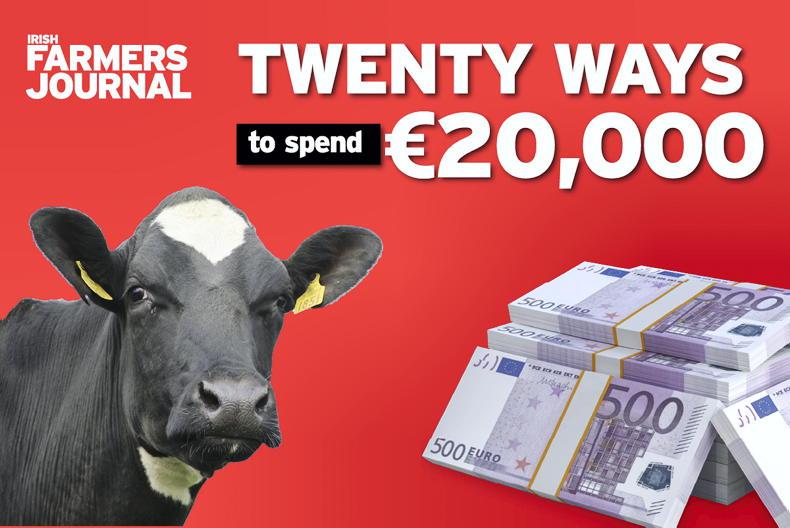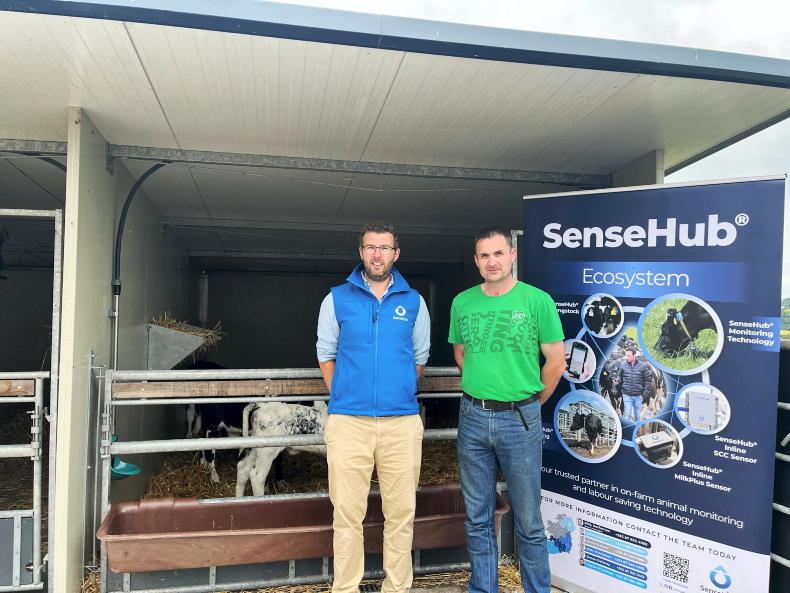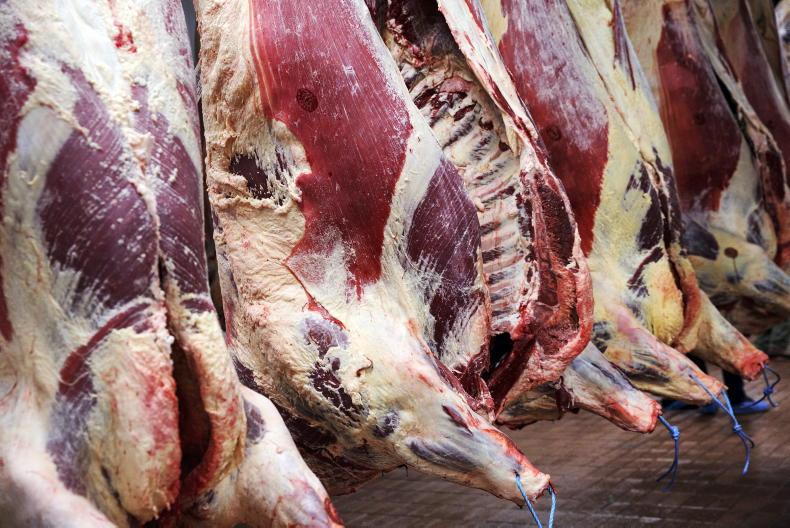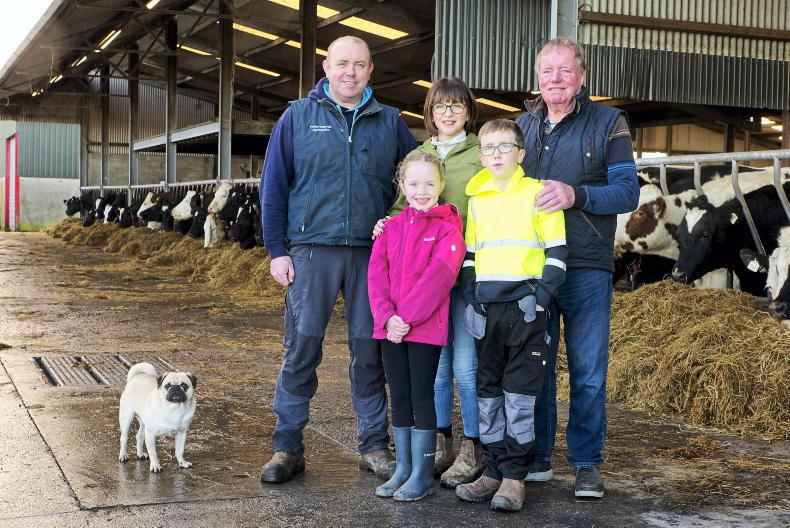Husband and wife team David and Wilma Finlay, owners of ‘The Ethical Dairy’ began their journey in organic dairying in the 1990s and are one of the longest standing organic dairy farms in Scotland. The Ethical Dairy invites over 75,000 visitors to their farm every year and are known to be the largest cow-with-calf farm in Europe. This means calves stay with their mother to suckle for up to six months of age along with cows being milked once a day.
Located in Castle Douglas on the south west coast of Scotland, the Finlays are milking 130 cows. Alongside this they rear bull calves and beef calves. They also have 250 sheep on rough land. The farm consists of 850 acres of mixed land, of this the dairy enterprise consists of 400 acres. There are two employees on farm working on a 10 on four off roster system.
The farm is producing and selling its own cheese and ice cream. This attracted many visitors on the farm and the idea of ‘The Ethical Dairy’ came about when visitors from non-farming backgrounds began to ask why calves were taken from their mothers.
The biggest challenge for David and Wilma was to find a way to keep cows with their calves while keeping the farm financially viable. It took the Finlays some time to get this right but they say they are happy with where they are today.
New dairy plant
They began their journey of cow-with-calf in 2012. There was a new dairy plant built to accommodate the calves to enter the parlour with the cows. It is a 10-10 auto tandem parlour where each cow has an individual cubicle similar to a robot system. The cluster is put on from the side rather than a traditional milking parlour where clusters are attached at the back.
The Finlays learned a lot from this experience, but they suffered financially as cows that were used to the conventional system were stressed, wouldn’t let down milk and cows would hold onto butterfat where the Finlays were getting butterfat content results of 2%. This was a full cow with calf system and it wasn’t going to work for the Finlays as cows struggled to go back in calf the following year.
David and Wilma parked this idea for a while and researched the topic further. They visited farms with similar systems in Holland but nobody was doing it with herds larger than 30-40 cows. Again in 2016 they decided to try cow-with-calf once more, but this time with a different approach.
antibodies
Once the calf is born, the cow and calf are left in the calving box for three to four days. The cow is not milked until 24 hours after calving and the calf is fed with the milk from the first milking to make sure the calf consumes antibodies from the cow.
The cows are milked once a day for the first six weeks and calves are separated from the cows for the night from about eight weeks of age in order to prepare them for weaning. The cows and calves are separated by a barrier so they can still see and touch each other but calves cannot suckle them.
Replacements
Calves remain with the cows for six to eight months by day. At this point calves are weaned and male and female calves are separated. Dairy calves are reared as replacements for the dairy herd and surprisingly, beef calves and bull calves are slaughtered at 10 months old for ruby veal. Once calves are weaned, cows are milked twice a day again until the end of lactation.
The cows are a three-way cross between Swedish Red, Holstein and Montbeliard. The herd is split calving in April and November. As calves are feeding from the cow, production from cows is not accurate but the cows are producing about 6,000l of milk with calves drinking about 2,000l. The cows have a flat milk curve. They don’t peak high like Holsteins but they also don’t drop off as fast.
Cows’ fertility consists of a 385-day calving interval as calf suckling can delay the oestrus cycle. The replacement rate on the herd in recent years is 15% and the average age of the herd is six lactations. Cows are kept out on grass as much as possible and haven’t been fed any meal in seven years but do get mineralised lucerne based nuts for additional supplement.
The Finlays have also battled with disease control. On conventional system, cows are separated from the calf, minimising the risk of the mother passing disease to their young. It’s an obstacle the farm is continuously fighting against and must manage.
David believes that any form of farming involves compromise. He believes his model can potentially deliver enough affordable food but also provides ethical benefits with no extra cost to society.
There is very little work done on this topic in Irish research until recently when Dr Emer Kennedy of Teagasc conducted a study in Moorepark.
Calf health
The study looked at calf health, calf growth, calf behaviour, milk production, cell count, body condition score, locomotive score, and labour.
In the study, there were three different groups studied as part of the trial. The conventional system, full-time system, and a part-time system. The conventional system acted as a control.
The conventional system is what we are used to where the calves are taken from the cow post calving once they have been licked and before they suck the cow. Calves are given colostrum and join the rest of the calves.
The full-time system consisted of cows and calves remaining together on a full-time basis. Three days after calving both cows and calves are turned out to grass and are only separated at milking twice a day.
The part-time system is where cows are milked once a day in the morning time. All calves remained in a straw bedded area indoors fulltime. Cows are let out to grazing after milking in the morning and were brought in at 3pm. From 3pm to 8am the next morning, cows and calves were left together in the straw bedded area.
Main focus
The main focus of the study was calves’ growth from birth until weaning at eight weeks of age. Calves were also monitored in the early post weaning stage. Calves with their dam pre weaning had 29% higher weight gains than calves reared conventionally. Weight gain was higher for calves reared conventionally at 10 weeks old which suggests calves with their dam full time lost weight post separation and were stressed when weaned from their mother.
Calf health was poorer with calves’ full-time with their dam. It was noted that 25% had to be removed from the study due to illness, 40% of the calves’ needed antibiotics compared to 6% of the conventional calves.
Cow production was also reduced. Cows rearing calves at foot had yield reduction of 30% milk solids when compared to the conventional herd. Production was expected to bounce back when calves were weaned but never did.
The study also showed that the cows and calves together full-time was the most labour intensive. Moorepark research centre is setup for a conventional system and implementing the calf at foot system would require a big change in infrastructure on the farm to cater for the calves with cows.










SHARING OPTIONS